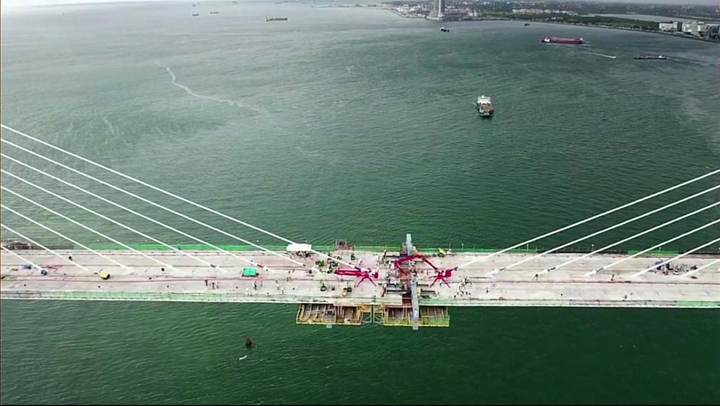
AFTER more than three years of construction, the longest cable-stayed bridge in the Philippines was finally built, as both sides of the 390-meter central span of the Cebu-Cordova Link Expressway (CCLEX) were recently joined together successfully by the Cebu Link Joint Venture (CLJV), a consortium consisting of Acciona, First Balfour, and D.M. Consunji Inc. (DMCI).
The Cebu Cordova Link Expressway Corp., a subsidiary of Metro Pacific Tollways Corp., awarded the project to CLJV in 2017 to design and build the 650-meter cable-stayed bridge as the principal structure, with a span of 390 meters between tower pylons, located over the entrance to the Port of Cebu.
The project includes several viaducts as well as a section of the highway on a 5.2-kilometer length embankment.
Following the client’s design approval, construction began in July 2018 and lasted until September 2021, creating more than 2,500 direct and indirect jobs in the area.
Spanish company Acciona and the JV partners carried out most of the work on a self-performing basis because of its construction’s technical and logistical complexity.
The deck of the bridge was built using a special “Underslung form-Traveler,” designed, and assembled using the latest technology, allowing complete sections of up to 7.15 meters long to be installed.
Designed and constructed to withstand extreme natural phenomena such as earthquakes, typhoons or tsunamis, the CCLEX’s foundations are up to 60 meters deep and were constructed with concrete piles in the seabed and coordinated by Acciona.
Over 150,000 m3 of concrete, 31,000 tons of Grade-75 steel, and 965 tons of active steel for the cables and columns were used in its construction.
A launching gantry designed and manufactured by Acciona was used to construct the access viaducts to the main bridge.
The CCLEX is aimed at further improving economic growth and trade activities in Cebu Province, as well as reduce traffic congestion currently suffered on the existing bridges by connecting Cebu City with Mactan Island via Cordova.
Also, the expressway’s operation will provide a faster connection between Cebu’s industrial zone and Mactan International Airport and Cordova’s new urban developments on the island, becoming a core communications route that will boost the local economy.
What’s more, the bridge’s location as a new gateway to nearby Cebu International Port, where about 80 percent of domestic and international shipping operators and shipbuilders are located, will help fast-track the transport of goods.

